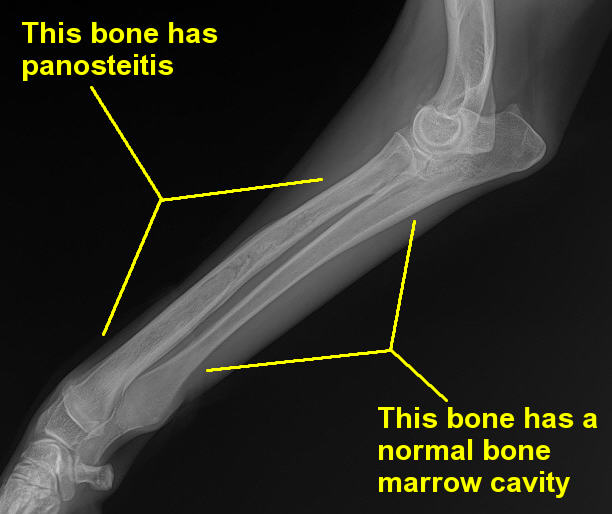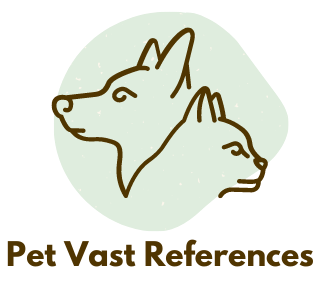Contents
Panosteitis (Long Bone Disease) is a growth disorder that causes great pain to young dogs but vanishes with age. Different rate of growth of the bone plates is the culprit causing the discomfort. The bone growth stops once the dog reaches maturity. Hence, in adulthood, there’s no more pain experienced by large, big-boned dogs, for instance, German Shepherd dogs apart from Great Danes, Rottweilers, Golden Retrievers, Labradors,s and Dobermans. The incidence of Panosteitis is higher in males than females.
Usually, when the dog is between the age of 6 to 18 months, the growing pain affects the animal. In short, it is a juvenile disorder that automatically regresses with the onset of sexual maturity.
Signs that Says Panosteitis

The pain causes a limp and more than one leg can get affected by Panosteitis (short name is Pano), which should not be considered a disease but a teething problem of body growth in canine breeds. The lameness is clinically described as ‘shifting lameness’ or ‘shifting pain disease’.
Generally, such dogs show signs of lethargy and appetite loss (since they remain depressed) combined with feverish body temperature or tonsillitis. Also evident is an increase in the white blood cell count. There is a noticeable reluctance to walk or exercise. The clinical symptoms of Panosteitis are periodic and reflect a waxing and waning pattern. The signs last either a few days or a few weeks and then disappear to resurface again.
More About Panosteitis
The key characteristic of Panosteitis is fatty bone marrow inflammation – the limb bones are the targets of Panosteitis. The long bone shafts which have a higher percentage of bone marrow face the brunt like the ulna, radius, femur, humerus, tibia, pelvic, and foot bones. The bone pain can be excruciating and might lead to lameness. The bone inflammation occurs because Pano leads to the degeneration of fat cells of bone marrow and certain structural changes like osteoblasts
The cause of Panosteitis is yet to be deciphered. The initial hypothesis point that some bacteria were responsible has been ruled out. There is a consideration that Pano is viral keeping in mind the symptoms of virus infection (fever, decreased white blood cell count, etc).
Whether or not Panosteitis is genetic, scientists are yet to determine. A connection is made to the genetic link since certain breeds of dogs are more affected than others. But the main reason behind Pano is seen as a diet that’s rich in protein and fat. So, the occurrence of Pano is more dependent on the nutritional aspects rather than the genetic or viral aspect.
How to Diagnose Pano?
Panosteitis goes away and hence it is not a matter of utter concern; only your little pup will have to undergo a passing phase of pain. It can be diagnosed by X-Ray and only a vet, specializing in canine orthopedics, can identify the disorder from the X-Ray plate.
Vet surgeons have found out that there is an increase in bone density in Panosteitis. In the later stages, the bones take on a patchy or mottled appearance, which returns to normalcy once the dog outgrows puppyhood.
Treatment of Pano
Never administer steroids to dogs afflicted with Pano. Painkillers come with side effects like irritation in the intestines. Most important of all feeding an appropriate diet to such dogs is crucial because food plays a vital role in their growth and skeletal development. Natural nutrition and exercise management are ideal ways to deal with Panosteitis.
Make a Stop to Growing Up Too Fast
Retard the process of growing up too fast – because that’s the reason behind Pano. Ideally, the growth rate should be slowed down in puppies affected by Panosteitis. Puppies who are not affected by any conditions should be offered good quality food with the right amount of protein, vitamins, carbohydrates, fats, and minerals. Homemade food with the right amount and types of ingredients is a great option. An all-natural diet is helpful in this regard. Even in home food, the number of bones should be kept to a minimum. Commercial dog foods can be given as recommended by your vet.

 Top 10 Best German Shepherd Breeders in Maryland (MD)
Top 10 Best German Shepherd Breeders in Maryland (MD)